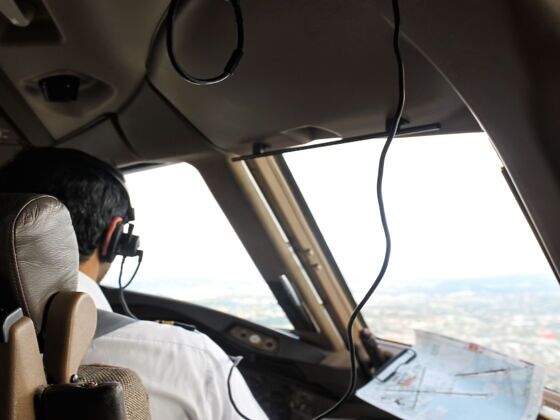Pilots are considered to be symbols of trust. We put our lives in their hands. We expect that their years of training qualify them to steer a giant metallic object through the sky, containing hundreds of people, and land it safely. Usually, our trust is well founded. Pilots are, however, human, and prone to human flaws – that includes mental illness and reckless decision making. In a recent terrifying incident onboard a flight from Seattle to San Francisco, a Horizon Air flight almost ended in disaster at the hands of a rogue off-duty pilot.

An Off-Duty Pilot on Mushrooms Almost Brought Down an Entire Plane. Here’s What Could Have Happened
Joseph Emerson, an Alaska Airlines pilot, had been sitting in the jump seat – a foldout seat behind the captain’s seat – and chatting with the two pilots who were actually flying the plane. He told the pilots, “I am not OK,” before grabbing the red fire handles (or “T-handles”), which are used to shut off fuel to the engine. Luckily, after a brief struggle with Emerson, the pilots were able to take control of the situation and reset the T-handles, preventing any damage from being done. Following the incident, Emerson was brought to the back of the plane and handcuffed, but it didn’t prevent him from grabbing the exit door handle and trying to open it.
According to investigators, Emerson revealed that he was in the midst of a nervous breakdown, had not slept in 40 hours, and had just taken psychedelic mushrooms for the first time.
“I’m admitting to what I did,” he told police, according to the complaint. “I’m not fighting any charges you want to bring against me.” He was booked on suspicion of 83 counts of attempted murder.
Thankfully, Emerson’s pulling of the T-handles didn’t have any catastrophic results – but it easily could have. First of all: how was he allowed to fly in the cockpit in the first place? Well, jump seats are meant to accommodate additional passengers in the cockpit, and while they usually remain unoccupied, pilots, and inspectors for the FAA (Federal Aviation Administration), DOD (Department of Defense), and NTSB (National Transportation Safety Board) are allowed to sit in the jump seat. The decision to allow another pilot into the jump seat falls on the pilot in charge of the aircraft, and in this case, Emerson showed no initial signs of instability, nor any other reason to deny him the seat.
If Emerson had succeeded in cutting off fuel to the engine, the plane would have essentially turned into a glider. A valve in the wing would have closed, choking off the fuel supply to the engine. If this happens, pilots need to search for a safe, flat, empty landing site where the plane could touch down. It goes without saying that, given the surrounding terrain, such a site might not be available, especially if you’re flying over water. This scenario runs a high likelihood of a crash landing, with fatal implications for all onboard. So, basically, cutting off fuel to the engine would have created a potentially fatal situation.
Luckily, the odds of such a freak accident ever happening onboard your flight are slim to none, and even on this rare occasion, catastrophe was thankfully avoided.